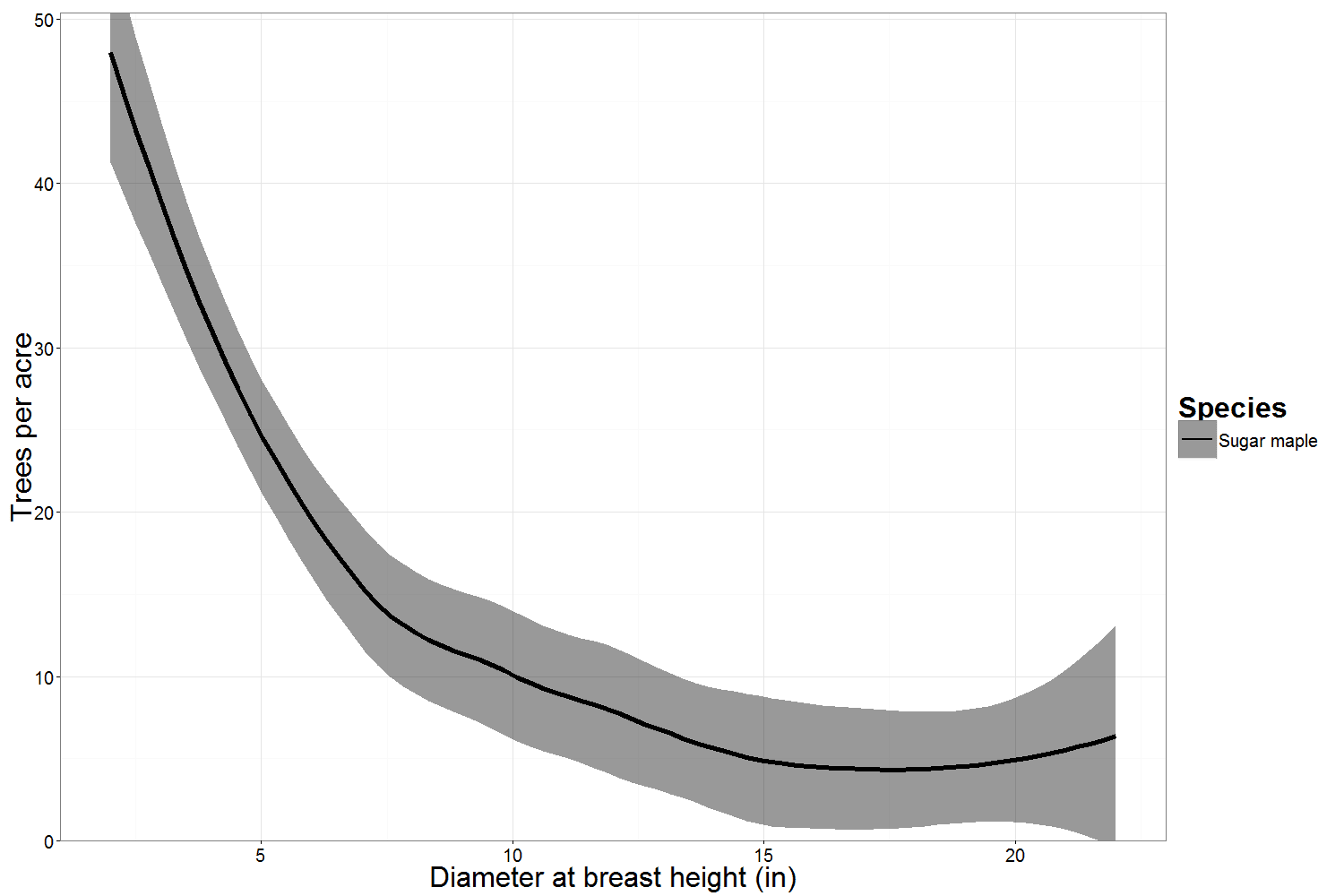When you plan a cruise, you’re usually planning to answer a specific question - how much merchantable material would come out if I thinned this stand? Is stocking high enough for a selection harvest? Should I buy/sell this property? How much is this tract worth?
When setting up a cruise on SilviaTerra.com, the number of plots in a cruise depends on the level of confidence you want in the answers, and the amount of error in the estimates you decide is acceptable. How do you go about choosing what error and confidence you prefer? To answer that question, you might ask yourself another: how much does it cost you if your cruise answers your question “incorrectly"?
If you try changing the values for confidence and error, you can see that decreasing confidence and increasing error both result in fewer plots in the cruise layout, and increasing confidence or decreasing error results in more plots. The allowable error is the precision you require for your final stocking estimates. The confidence is the probability that your final estimate ± a confidence interval contains the true mean for the stand (what you would get if you measured every single tree).
There is a tradeoff between the cost of measuring plots and the cost if your estimate is “wrong”. Measuring plots also costs you both time and money. Consider an example of a 100 acre stand with an estimated variation of 0.25.
Plots
|
Cost to cruise ($50/plot)
|
Confidence
|
Allowable Error
|
17
|
$850
|
0.9
|
0.1
|
5
|
$250
|
0.9
|
0.2
|
2
|
$100
|
0.9
|
0.3
|
We’ll assume a stumpage price of $100/MBF.
If the merchantable volume in the stand is 5000 board feet of sawtimber per acre, then the “true” value of the stand is 5 MBF * $100/MBF, or $500 per acre. That becomes $50,000 for the 100-acre stand.
If your allowable error is 0.1, and your plots are accurate, perhaps your estimated volume would be 4600 board feet (± 460); or, 5400 board feet ± 540. Scaled out, that could put your estimate of value anywhere from $46,000 to $54,000, with your estimate still falling within the allowable error you specified at the beginning.
But suppose you specified an allowable error of 0.2. Installing 5 plots would be faster and easier than putting in 17, but your estimated volume could be anywhere from 4200 bd ft to 7500 bd ft. Your final estimated value could range from $42,000 to $75,000.
So in this case, if estimating a value of $75K for a stand worth $50K would be acceptable for your purposes, a 20% (0.2) allowable error would be a reasonable choice. But the “cost” of being wrong would be $25,000; the cost of putting in plots to meet an acceptable error of 0.1 would only be an additional $600.
If measurements from 17 plots and from 4 plots both resulted in an average of 5000 board feet per acre, that would be a value reported as either 5000 ± 1000 board feet, or, 5000 ± 500 board feet. You can see that the price of that precision is $650.
It’s important to consider the tradeoffs of time spent cruising and the precision and confidence in your results. Keep this in mind when you select the acceptable error and confidence for the next cruise you design!





























